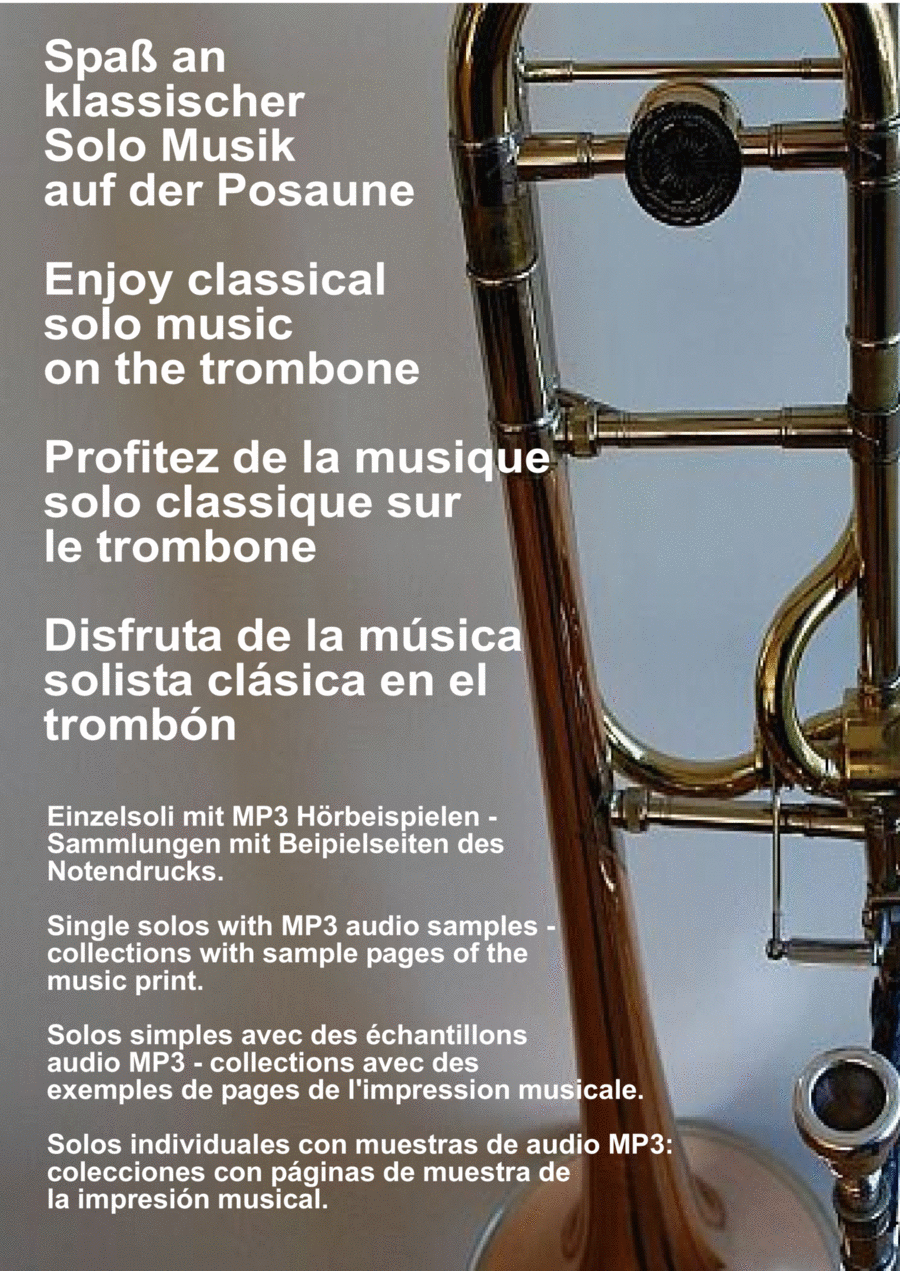Trombone Solo - Digital Download SKU: A0.936044 Composed by Antonin Dvorak, DAVID, Deransart, Emma Lou Diemer, Gaetano Donizetti, George Frideric Handel, George Goltermann, Giovanni Battista Sammartini, Gräfe, Hegner, Horneck, Jules Massenet, Karl Ditters von Dittersdorf, Kreuzer, Manns, Marcello, Max Bruch, P. Cavallini, Paradis, Punto, Qantz, Rachmaninof, Rieding, Rolla. Rubinstein, Steve Reich, and Wolfgang Amadeus Mozart. Arranged by wenner. 20th Century,Baroque,Classical,Renaissance,Romantic Period. Individual part. 45 pages. Christoph #5335477. Published by christoph (A0.936044).
